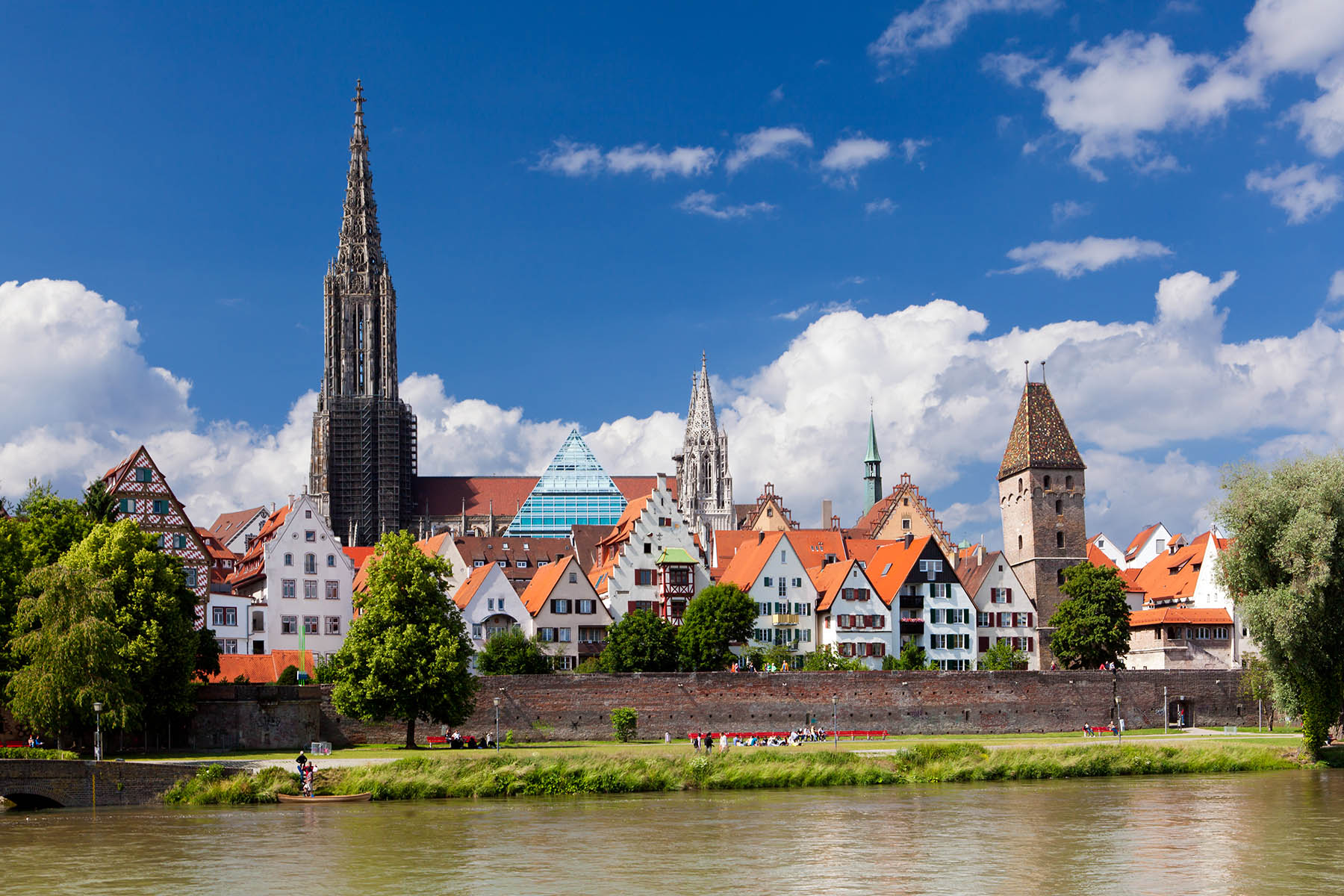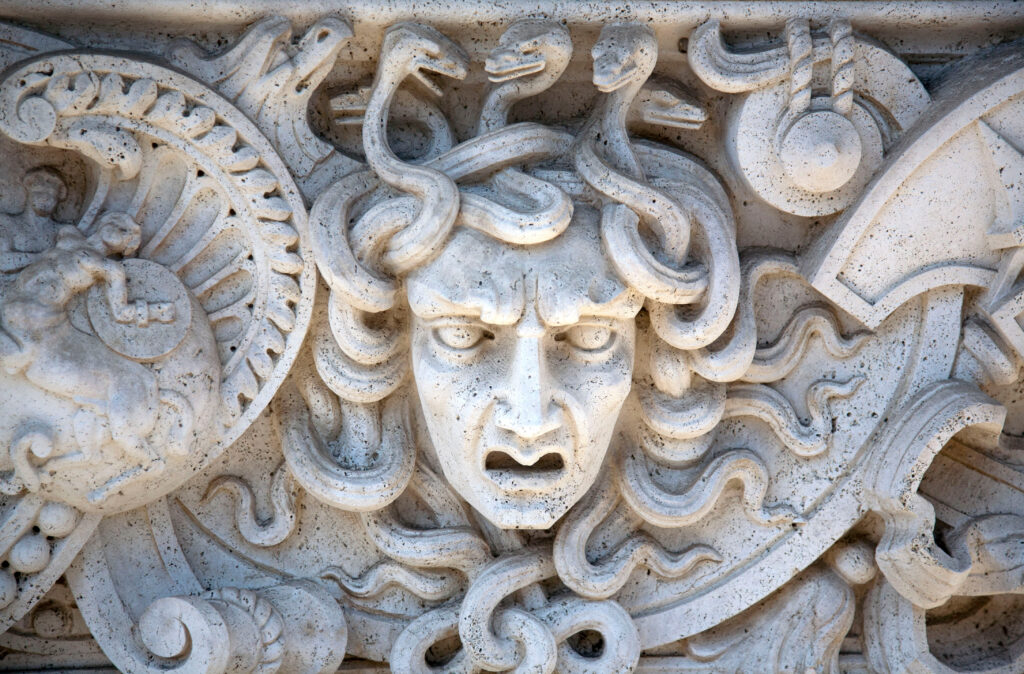Ulm Münster Age: 646 (c. 1377-1890)
On a family reunion trip this Summer, we visited the city of Ulm, located in Southern Germany, about an hour outside of Munich. Ulm is famous for its scenic beauty, with an unbelievably quaint historic area Criss-crossed with streams that flow into the Danube (Donau) river. However, its most extraordinary claim to fame is the Ulmer Münster – a massive church in the center of town. It boasts the tallest steeple in the world, at 161.53 meters, or 530 feet! The predominantly limestone Münster was the tallest building in the world when completed in 1890 but was superseded by Philadelphia City Hall in 1894.
Fin and I, along with family members, climbed up 70 meters to the viewing platform level, where you can see 360-degree views of the surrounding Baden-Württemberg and Bavarian countryside. Ulm sits right on the edge of both states, like Kansas City, with Missouri and Kansas. We waited until noon, when the bells, which we could see below us, started to ring. A beautiful resonance vibrated the chamber. We learned there’s a meaning behind the various bells, with certain tones rung for special occasions, including the corpse bell, for funerals!
Initially started as a Catholic cathedral in 1377, what struck me most about this impressive structure is how it has evolved over the centuries. When we first approached, large gay pride flags were proudly displayed along the front plaza. This type of display is unusual for a church, so I wondered what the story was. It turns out that the church had a mass conversion to Protestantism in the 1530s and thus is not considered a church but is named the Minster. This conversion also explains the flags on the front of the facade, as the Lutherans’ acceptance and celebration of diversity have been a hallmark of their faith.
Construction continued for over five hundred years, with adjustments and improvements made to avoid structural failure and make the steeple ever taller by family after family of architects and masons, artists, and builders. According to Wikipedia, early on, the women of Ulm also participated –
“The women of the Ulmer Assemblage would also contribute to the foundation works, something memorialized by 17th and 18th-century composer Barbara Kluntz.*”
Many of the Minster’s beautiful glass windows were destroyed during the Second World War. Instead of trying to duplicate what was once there, the congregation decided to have modern artists create original works, such as Tomas Kuzio. The results are some of the most beautiful stained glass windows I’ve seen. See the pictures below. There is even a reference to Einstein’s equation, E=MC2, a nod to how science and religion can reside amicably and in appreciation of one another. This scientific reference is another example of how the Ulmer Minster has evolved into modern times to maintain its relevance and centrality to the citizens it serves.
Inspiring, majestic.
* City of Ulm: Ulmer Geschichte(n) – Die Ulmer Sammlung 1230–1808








